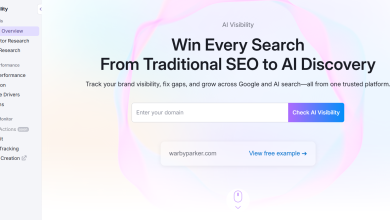
The Speed of Change Demands New Approaches
The business landscape is transforming at an unprecedented pace. ChatGPT became the fastest-growing consumer application in history, reaching 100 million users in just two months—a milestone that took Facebook four and a half years to achieve. This explosive growth signals more than a technological trend; it represents a fundamental shift in how businesses must approach innovation and strategy development.
For business leaders, the question isn’t whether to integrate AI into strategic planning, but how to leverage it effectively to build more resilient, innovative business models. The global AI market is projected to surge from $196.63 billion in 2023 to $1,811.75 billion by 2030, underscoring the urgency of adoption for competitive advantage.
Understanding the Business Model Canvas Framework
Before exploring AI’s transformative potential, it’s crucial to understand the foundation of modern business model development. The Business Model Canvas (BMC), developed by Alexander Osterwalder, has become the gold standard for conceptualizing and refining business strategies. This strategic management template breaks down a business into nine essential building blocks covering four main areas: customers, offer, infrastructure, and financial viability.
The BMC’s nine blocks—from Customer Segments to Revenue Streams—create a one-page strategic overview that makes complex business models instantly comprehensible. The BMC forces leaders to think systematically about how their company creates, delivers, and captures value. However, filling out a comprehensive BMC traditionally requires extensive research, market analysis, and strategic thinking—a process that can take weeks or months. This is where AI becomes a game-changer.
The Power of AI-Driven Business Intelligence
Generative AI and natural language processing (NLP) are transforming how businesses approach model development. These technologies don’t replace human creativity and critical thinking; instead, they amplify our capabilities by synthesizing vast amounts of information and generating insights at unprecedented speed.
Consider the traditional approach to customer segmentation. A team might spend weeks conducting surveys, analyzing demographic data, and building personas. With AI, this process can be accelerated dramatically while improving the depth and quality of insights.
From Basic Prompts to Strategic Intelligence
The key to leveraging AI effectively lies in understanding how to extract meaningful insights rather than surface-level information. Many business leaders make the mistake of using simple prompts that yield generic results. For instance, asking an AI to “produce a BMC for an on-demand clothing rental service” generates rudimentary output that lacks market differentiation.
The real power emerges through “prompt stacking,” a technique that builds sophisticated analysis through iterative questioning. This approach mirrors the strategic thinking process of experienced consultants but operates at digital speed.
A Real-World Application: Using AI to Build My Business Strategy
Let me share how I used AI to develop and refine my business model for “The CEO’s Mindset Reset: Daily Reflections for Transformational Leadership.” Rather than starting with assumptions about what leaders needed, I leveraged AI’s analytical power to uncover genuine market gaps and validate my approach.
Starting with the Business Model Canvas framework, I used AI to analyze patterns from my own entrepreneurial journey—from building RedEye Coffee to teaching at FSU. Through prompt stacking, I explored specific pain points leaders face. I asked AI to analyze why 45% of startups fail within five years, then drilled deeper into the leadership mindsets behind those failures. For example, I prompted: “Analyze the top 20 business leadership books—what practical daily challenges do they fail to address?” The AI helped identify that most failures weren’t about strategy but about the psychological challenges of leadership, the isolation (Day 17), the burnout border (Day 31), and the comparison trap (Day 8).
Building on this foundation, I used AI to validate my unique value proposition. The insight was clear: most leadership content offered either pure theory or generic advice. There was a gap for daily, practical reflections based on real entrepreneurial experience, including failures. My story of buying out toxic partners at significant personal cost (Day 30) wasn’t just a cautionary tale; it was exactly the kind of real-world scenario leaders needed to learn from.
The AI helped me structure the 91-day format by analyzing optimal learning cycles and habit formation research. It suggested that daily reflections would create better retention than traditional chapter formats. Each day would follow a consistent structure: Mindset Minute (real scenario), Mindset Reset (research-backed insights), Reflection question, and Today’s Practice.
For customer segmentation, AI analysis revealed my primary audience wasn’t just new entrepreneurs but also established leaders facing growth transitions. The AI identified that leaders like those in my book—from Lewis Raymond Taylor’s transformation from prison to $25M business, to NaChé Thompson’s pivot from education to cosmetics—all shared common transformation patterns that my framework could address. When our AI suggested targeting “busy professionals,” we validated this against actual customer data before committing resources.
Most importantly, AI helped validate the revenue model. By analyzing successful business book launches and reader engagement patterns, it was confirmed that a daily reflection format would create stronger reader commitment and higher completion rates than traditional business books. This insight shaped both the product and the marketing strategy.
Discovering Multiple Business Model Options
Where AI truly excels is in generating and evaluating multiple business model alternatives. Traditional planning often suffers from confirmation bias, with teams becoming attached to their initial ideas. AI can objectively present various options, complete with benefits and challenges for each approach.
In the fashion example, AI might suggest five distinct models: a Personalized Trend Consultancy Service, Virtual Wardrobe Subscription, Rental and Resale Marketplace, Crowdsourced Fashion Curation, or an AI-Powered Personal Stylist App. Each option addresses different aspects of the customer’s challenges and represents a unique strategic direction.
For instance, the Virtual Wardrobe Subscription model offers predictable monthly revenue and customer retention benefits, but requires significant upfront inventory investment and complex logistics management. This level of analysis helps leaders make informed decisions based on their resources and capabilities.
This multiplicity of options is crucial. Many businesses fail not because their ideas are bad, but because they pursue suboptimal business models. Having multiple, well-analyzed alternatives enables more informed strategic decisions.
The Competitive Advantage of AI Integration
Businesses that effectively integrate AI into their model development process gain several competitive advantages. First, they can iterate and test concepts at a fraction of the traditional time and cost. What once took months of market research can be accomplished in days or weeks.
Second, AI-driven analysis often uncovers non-obvious connections and opportunities. By processing vast amounts of market data, consumer trends, and competitive intelligence, AI can identify gaps and niches that human analysis might miss.
Third, the speed of AI enables real-time adaptation. As market conditions change, businesses can quickly reassess and adjust their models, maintaining agility in volatile markets.
For established companies, AI can identify innovation opportunities within existing business models, not just create new ones. This makes AI valuable for both startups and enterprises seeking transformation.
Implementation Strategies for Business Leaders
To successfully integrate AI into business model development, leaders should follow a structured approach. Start by identifying specific areas where AI can add immediate value, such as market analysis or customer segmentation. Build internal capabilities through training and experimentation, ensuring teams understand both the potential and limitations of AI tools.
Develop clear protocols for AI use, including validation processes for AI-generated insights and guidelines for ethical application. Create feedback loops to continuously improve prompt engineering and result interpretation.
Most importantly, foster a culture that embraces AI as an enabler rather than a threat. The businesses that will thrive are those that successfully combine AI’s analytical power with human creativity, empathy, and strategic thinking.
Since implementing this AI-assisted approach, I’ve helped over 40 entrepreneurs refine their business models, with participants reporting 60% faster time-to-market and significantly improved investor pitch success rates compared to traditional methods.
Navigating Ethical Considerations and Limitations
While AI offers tremendous potential, business leaders must approach it with appropriate caution and ethical consideration. AI systems can produce “hallucinations” of plausible-sounding but inaccurate information. This makes human oversight and validation essential. Remember that AI analysis requires validation—treat insights as hypotheses to test, not truths to implement blindly.
There’s also the risk of over-reliance on AI-generated insights. While AI excels at pattern recognition and data synthesis, it cannot replace human judgment, creativity, and understanding of nuanced market dynamics. The most successful applications treat AI as a powerful tool that augments human decision-making rather than replacing it.
Business leaders should also consider the ethical implications of AI adoption, particularly regarding data privacy, algorithmic bias, and the impact on employment. Responsible AI integration requires clear policies and ongoing evaluation of both benefits and risks.
The Future of Business Strategy
As AI continues to evolve, its role in business model development will only grow more significantly. Natural language processing will become more sophisticated, enabling even more nuanced market analysis. Generative AI will help businesses prototype and test concepts virtually before committing resources.
The convergence of AI with other technologies—such as blockchain, IoT, and quantum computing—will create entirely new business model possibilities. Leaders who build AI fluency now will be best positioned to capitalize on these emerging opportunities.
A Call to Action for Business Leaders
The integration of AI into business model development isn’t a future possibility; it’s a present necessity. With 45% of startups failing within their first five years, often due to flawed business models, the stakes are too high to ignore AI’s potential for improving outcomes.
Business leaders must act now to build AI capabilities within their organizations. This means investing in tools and training, establishing ethical guidelines, and fostering a culture of innovation that embraces technological advancement.
Start Now: Choose one business challenge, use AI to generate five alternative approaches, then validate the top two with real customer feedback. The question facing every business leader is clear: Will you leverage AI to accelerate and improve your business models, or will you watch competitors gain insurmountable advantages? The tools are available, the benefits are proven, and the time for action is now.





